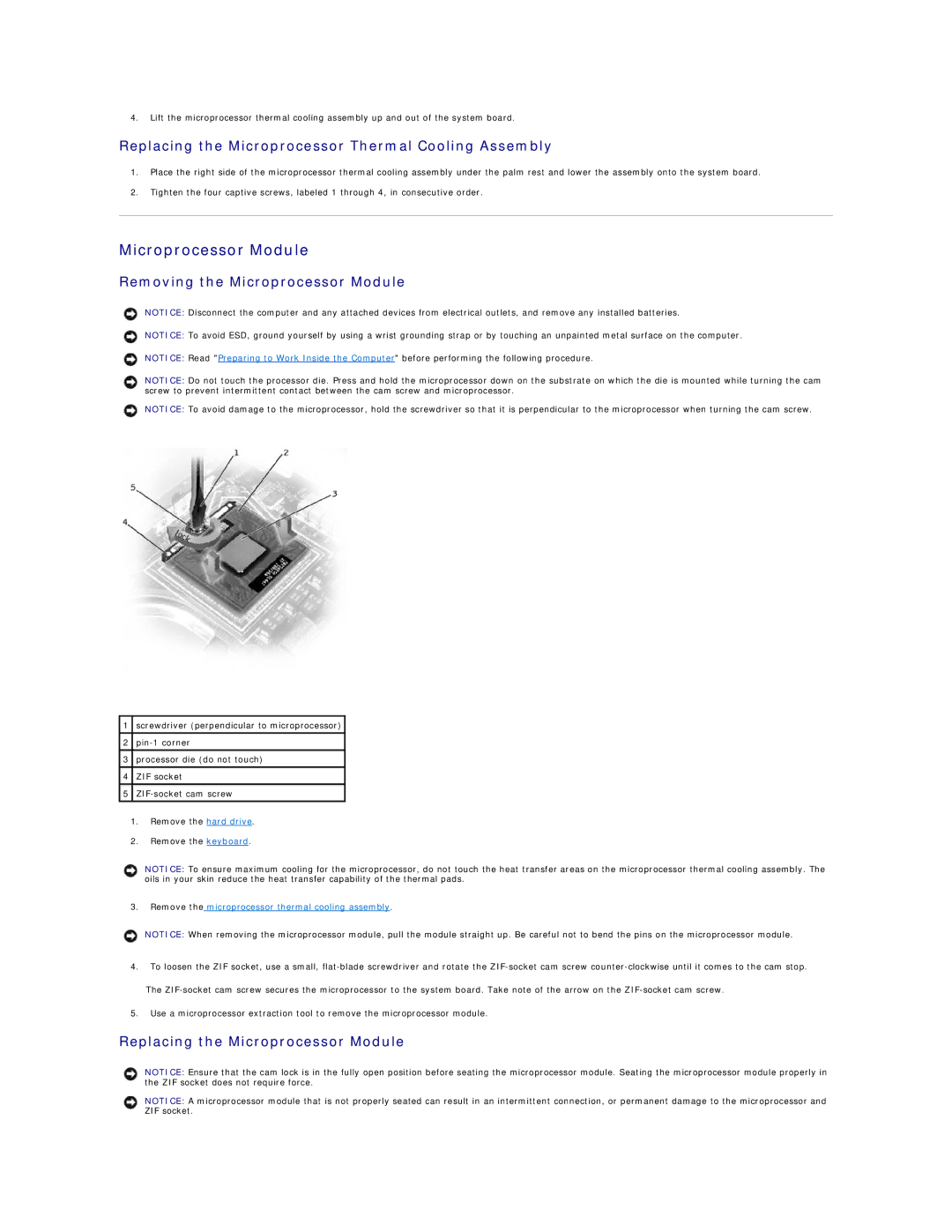
4.Lift the microprocessor thermal cooling assembly up and out of the system board.
Replacing the Microprocessor Thermal Cooling Assembly
1.Place the right side of the microprocessor thermal cooling assembly under the palm rest and lower the assembly onto the system board.
2.Tighten the four captive screws, labeled 1 through 4, in consecutive order.
Microprocessor Module
Removing the Microprocessor Module
NOTICE: Disconnect the computer and any attached devices from electrical outlets, and remove any installed batteries.
NOTICE: To avoid ESD, ground yourself by using a wrist grounding strap or by touching an unpainted metal surface on the computer.
NOTICE: Read "Preparing to Work Inside the Computer" before performing the following procedure.
NOTICE: Do not touch the processor die. Press and hold the microprocessor down on the substrate on which the die is mounted while turning the cam screw to prevent intermittent contact between the cam screw and microprocessor.
NOTICE: To avoid damage to the microprocessor, hold the screwdriver so that it is perpendicular to the microprocessor when turning the cam screw.
1screwdriver (perpendicular to microprocessor)
2
3processor die (do not touch)
4ZIF socket
5
1.Remove the hard drive.
2.Remove the keyboard.
NOTICE: To ensure maximum cooling for the microprocessor, do not touch the heat transfer areas on the microprocessor thermal cooling assembly. The oils in your skin reduce the heat transfer capability of the thermal pads.
3.Remove the microprocessor thermal cooling assembly.
NOTICE: When removing the microprocessor module, pull the module straight up. Be careful not to bend the pins on the microprocessor module.
4.To loosen the ZIF socket, use a small,
The
5.Use a microprocessor extraction tool to remove the microprocessor module.
Replacing the Microprocessor Module
NOTICE: Ensure that the cam lock is in the fully open position before seating the microprocessor module. Seating the microprocessor module properly in the ZIF socket does not require force.
NOTICE: A microprocessor module that is not properly seated can result in an intermittent connection, or permanent damage to the microprocessor and ZIF socket.
